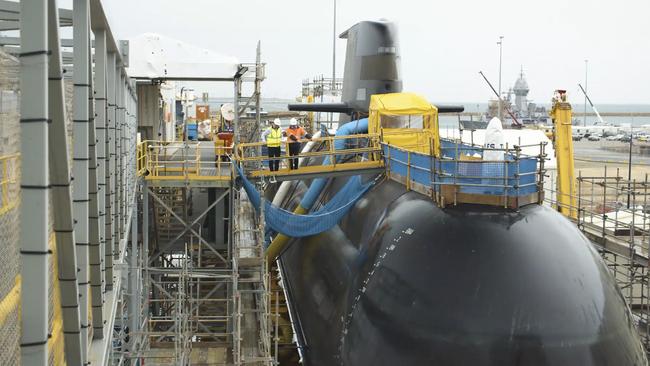Collins’ life extension uncertain
For years the RAN and ASC have been insisting that the forthcoming Life of Type Extension (LOTE) of Collins-class submarines will be routine – but now they are not so sure.

For years the RAN and ASC (formerly the Australian Submarine Corporation) have been insisting that the forthcoming Life of Type Extension (LOTE) of Collins-class submarines will be routine – but now they are not so sure.
This project needs to go smoothly to minimise a capability gap before the arrival of nuclear-powered submarines – especially since there is a high level of uncertainty about exactly when that will happen.
The first of class HMAS Collins was launched almost 30 years ago and in a perfect world they would start to be phased out of service about now, because that’s the average life of a submarine. However, because of multiple policy failures and changes of direction – including the cancelled Attack program – it has been clear for some time that the only viable solution for Australia’s submarine needs is to keep Collins going for a lot longer than originally planned.
That is far easier said than done, because a refurbishment large enough to revitalise a submarine towards the end of its life is a major undertaking.
It involves cutting the submarine in half and removing almost all the equipment – a time-consuming process.
Several major equipment items such as the diesel engines and the electric motors, collectively weighing hundreds of tonnes, will be replaced with new systems that have different dimensions and weight – a designer’s nightmare. And a lot of old wiring and pipework will need to be ripped out and replaced.
Presumably realising the enormity of the challenge, on October 25 Defence Industry Minister Pat Conroy announced that the government was appointing retired former US Navy deputy assistant secretary Gloria Valdez to conduct an “independent assurance activity” into the LOTE.
This continues a rich tradition of appointing American experts to tell us what to do – though in this case the logic is unclear because the USN stopped operating conventional submarines more than 40 years ago and their own recent record with nuclear-powered boats is poor.
At about the same time, Defence experts were telling Senate Estimates that the previously stated position that the LOTE would take two years per Collins was not strictly speaking correct. In the words of First Assistant Secretary John Chandler “a degree of over-run” could now be expected.
This is what industry has been warning of for years – especially the original designer, Sweden’s Saab-Kockums. The company has been in the business of upgrading and modifying submarines for decades, but they have been kept at arm’s length by the RAN and ASC – which, incidentally, is wholly owned by the Department of Finance and acquired the company after kicking Saab-Kockums out as shareholders in the year 2000.
A rule of thumb in the submarine industry is that major refits always take longer than planned. This is because it is impossible to know precisely what work needs to be done until all of the 30-year-old stuff is removed, and a proper assessment can be made of the corrosion and structural wear and tear that needs to be addressed.
In Sweden, Saab-Kockums has just completed a midlife upgrade of the Gotland class – a design that has many similarities to Collins, including that they are the same age. The company – along with the Swedish Navy – is happy to bring their expertise to bear – though the extent to which they will be involved remains unclear. Defence says they will certainly be included, and the details will presumably be part of the assurance review, which is due to report in the second quarter of 2024.
The LOTE might end up costing around $6bn – and that’s just for the platform. For the electronics and sensors, a separate process has been applied that has seen everything upgraded in batches during the life of the Collins program, particularly the critical sonar suite. This is the responsibility of French-owned Thales Australia, which has recently missed out on some underwater technology contracts here and must be wondering if they have a long-term future with everything now being about AUKUS.


